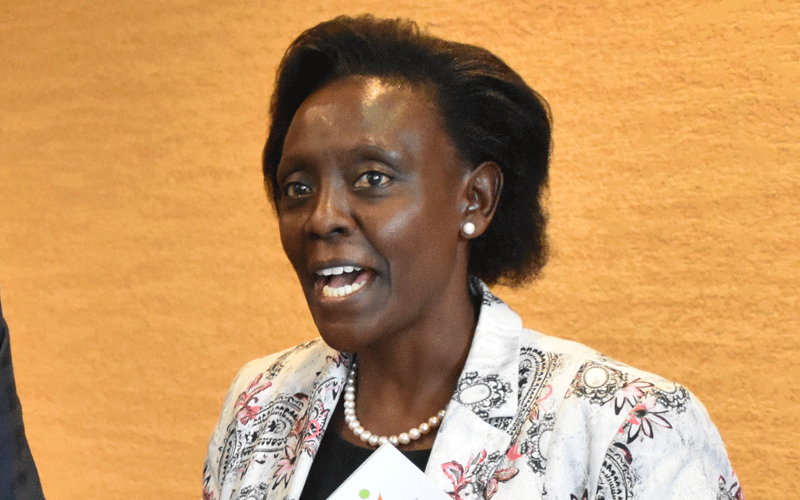Theft, tax evasion, weak systems cost counties revenue
By Eric.Wainaina, October 19, 2022County governments are losing up to Sh185 billion in own source revenue annually due to outright corruption, weak tax collection systems and tax evasion, among other vices.
Studies by the National Treasury, Commission on Revenue Allocation (CRA) and World Bank indicate dozens of county governments across the country continue to grapple with underperformance in local revenue mobilisation, collecting a paltry Sh31 billion annually against a potential of Sh216 billion.
Massive theft orchestrated by unscrupulous county staff, weak and inadequate collection systems and tax evasion as well as outdated value rolls that set land rates have been cited as the biggest contributors to poor own revenue collection.
A study released this month dubbed: “Comprehensive Own Source Revenue Potential and Tax Gap Study on County Governments” suggests that the total annual revenue potential across counties is around Sh93 billion but audited data show that counties collected only Sh38 billion annually on average in the 2017/18, 2018/19, and 2019/20 financial years.
Counties collect revenues from several streams as guided by the respective Finance Acts and Bills, among them property rates, building permits, agricultural transportation fees business licenses, liquor licensing fees, vehicle parking fees, hospital fees and public health services and outdoor advertising.
Revenue streams
Other revenue streams include county housing rent, fines, penalties, and forfeitures, environment and conservancy administration fees, game reserve fees, game reserve fees. Presently, with the current Sh31 billion own source revenue, it means regional governments operate with annual budgets of Sh400 billion, with the lion’s share going to recurrent expenditure, leaving them with very little for developments.
CRA Chairperson, Dr Jane Kiringai argues that counties could raise substantial resources to supplement their annual budgets by sealing loopholes that undermine the optimum collection of own source revenue as well as exploiting all the available avenues.
“If you add Sh216 billion to the Sh370 billion the counties get in the form of equitable share, we are talking about in excess of half a trillion shillings for financing devolution,” she said.
A damning revelation by Kiambu governor Kimani Wamatangi that a developer undertaking a Sh4 billion real estate project in the county conspired with unscrupulous officials to be exempted from paying approval levies reveals the extent to which regional governments lose billions in their own revenue source collection.
Wamatangi said the developer is undertaking a 200-acre real estate project after buying the land which he sub-divided into nearly 800 plots, selling each at Sh5 million.
Levies waived
According to Wamatangi, the developer approached some officials and successfully requested all levies to be waived, a move that denied the county millions of shillings in revenue.
“(After being sworn in) I found that someone came to Kiambu County and bought a piece of land measuring 200 acres in Juja. He then sub-divided it into 800 plots measuring eighth and quarter acre. He is selling them at Sh4 million and Sh5 million each. If you multiply, it’s about Sh4 billion,” Wamatangi said.
The county chief added: “That person then walked into the county offices and found the previous administration, they wrote him a letter indicating that he should not pay even a shilling to the county government, and he was given a 100 percent waiver.”
The counties, according to the study, can collect Sh32 billion from hospital and public health services fees, Sh23 billion from trading licenses, natural resources and transportation ((Sh16 billion), Sh14 billion from property rates, parking (Sh8.5 billion), agriculture transportation (Sh7billion), administrative charges (Sh5.8 billion), environment and conservancy administration fees (Sh5 billion) and Sh4.6 billion from technical services.
Fees and penalties
Further, counties can realise Sh4.6 billion from market trade center fees, liquor licensing fees (Sh4.4 billion), building plan approvals Sh3.7 billion), game park and reserves (Sh3.7 billion) and Sh800 million from fines and penalties.
Senate Speaker Amason Kingi, who is also the immediate former Kilifi governor, acknowledged that counties have been doing badly in their own revenue collection.
The report says that Nairobi City County collected around Sh9.5 billion on average over the last three financial years aganist a potential of collecting Sh67.6 billion, translating to a Sh58 billion shortfall.
For instance, in trading licensing, Nairobi collects Sh1.8 billion against its potential of Sh7.95 billion translating. Kisumu, which a City , has the second largest potential of Sh28.1 billion, followed by Kiambu with 11.3 billion but has been collecting less that Sh3 billion, Nakuru (Sh10.9 billion), Machakos (Sh8.8 billion), Mombasa (Sh6 billion), Kakamega (Sh5.8 billion), Kajiado (Sh5.4 billion), Nyeri (Sh4.3 billion), Narok (Sh4.1billion), Migori (Sh3.7billion) Kwale (Sh3.2 billion), Uasin Gishu (Sh2.7 billion) Kirinyaga (Sh2.3 billion), Kisii (Sh2.1billion) and Baringo (Sh2 billion).
